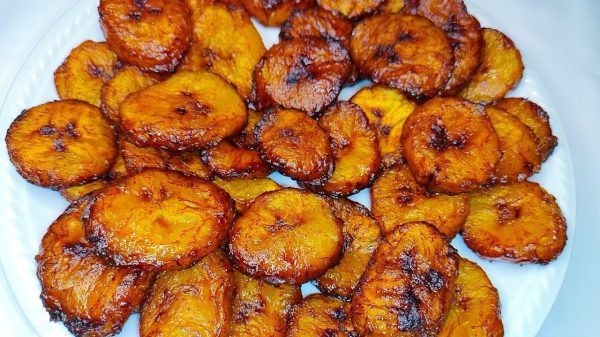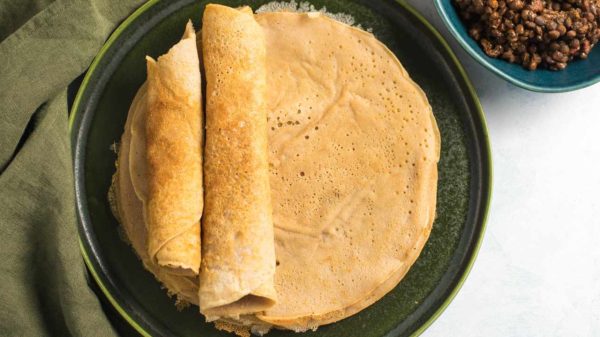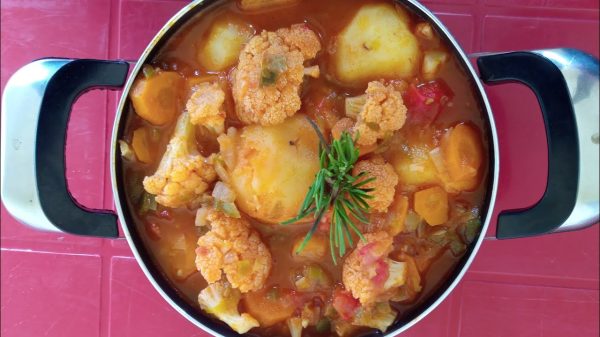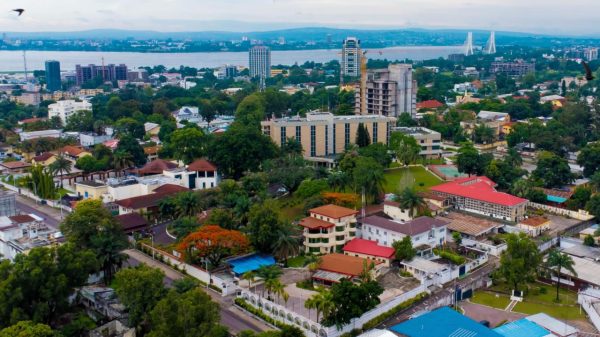Angolan cuisine is a flavorful mix of local traditions, African, and Portuguese influences, creating dishes you won’t forget.
This article invites readers to explore ten popular dishes that illustrate Angola’s diverse ingredients and innovative cooking techniques. Uniquely satisfying flavors. Each dish tells a unique story, from hearty stews and savory porridges to delicate sweets and refreshing treats. Discover how age-old traditions meet modern creativity, and prepare to immerse yourself in a culinary adventure that celebrates the soul and spirit of Angola.
Angolan cuisine is a vibrant tapestry woven from indigenous traditions and diverse cultural influences, offering a rich array of flavors and textures. Here are ten popular Angolan dishes that everyone should try:
1. Funge (Funje)
Funge is a fundamental staple in Angolan households, serving as a versatile accompaniment to various dishes. Made by vigorously stirring cassava (yuca) or corn flour into boiling water, it achieves a smooth, dough-like consistency. The northern regions of Angola predominantly enjoy funge made from cassava, while the southern parts prefer the corn-based version. Its neutral flavor makes it an ideal partner for richly seasoned stews and sauces, effectively balancing bold tastes. Preparing funge requires skill to ensure a lump-free texture, reflecting its cultural significance and the culinary expertise involved in its creation.
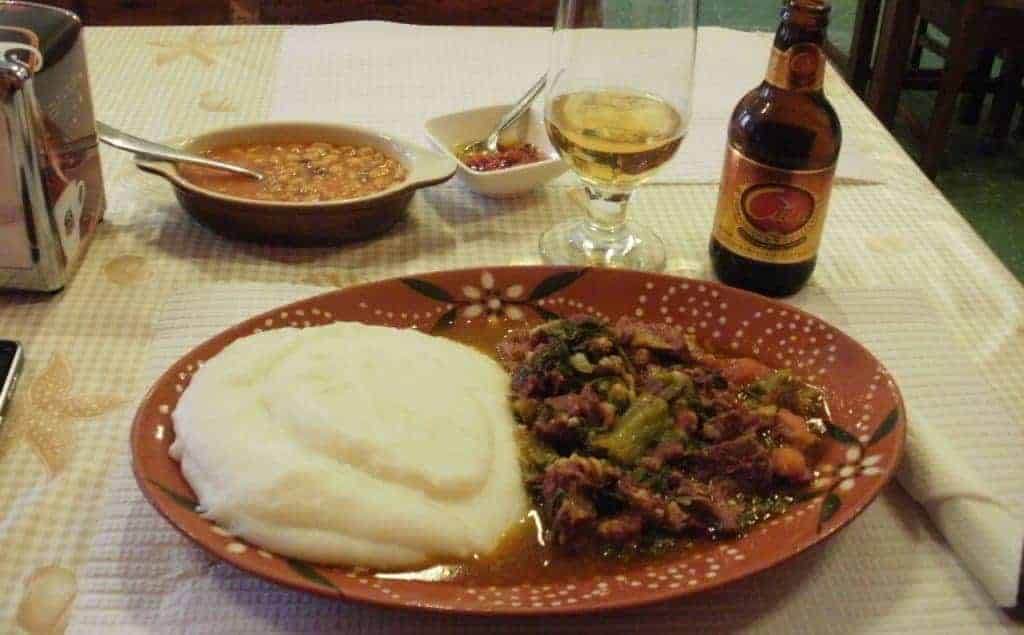
2. Muamba de Galinha
Celebrated as one of Angola’s national dishes, Muamba de Galinha is a hearty chicken stew that showcases the country’s culinary heritage. The dish features chicken pieces simmered in red palm oil (known locally as moamba de dendem), imparting a distinctive color and rich flavor. Ingredients like okra, squash, garlic, and spicy gindungo peppers are added, creating a complex and satisfying meal. Traditionally served with funge or rice, Muamba de Galinha exemplifies the harmonious blend of indigenous ingredients and cooking techniques that define Angolan cuisine.
3. Calulu
Calulu is a traditional Angolan stew that brings together dried fish or fresh fish with a medley of vegetables such as onions, tomatoes, okra, sweet potatoes, and spinach-like greens. The dish is slow-cooked, allowing the flavors to meld into a savory and aromatic experience. Often accompanied by funge, rice, or palm oil beans, Calulu reflects the resourcefulness in Angolan cooking, utilizing available ingredients to create nourishing and flavorful meals that are both comforting and deeply rooted in the country’s culinary traditions.
4. Mufete
Mufete is a beloved Angolan dish, particularly popular in coastal regions like Luanda. It consists of grilled fish, commonly cacusso (tilapia), accompanied by boiled plantains, sweet potatoes, cassava, and a flavorful onion and tomato sauce. The fish is typically marinated with garlic and spices before grilling, resulting in a smoky and succulent flavor. This communal dish embodies the essence of Angolan hospitality, often enjoyed during gatherings and celebrations, highlighting the country’s rich fishing culture and the importance of shared meals.
5. Kissuto Rombo
Kissuto Rombo is a traditional Angolan dish featuring roasted goat meat seasoned with a blend of garlic, lemon juice, and hot peppers. The young goat is marinated overnight to enhance its flavor and tenderness, then roasted until the exterior is crisp and the interior juicy. Typically served with rice and chips, this dish exemplifies the Angolan flair for combining simple ingredients to create robust flavors, reflecting the country’s pastoral traditions and the prominence of goat meat in its culinary repertoire.

6. Chikuanga
Chikuanga is a traditional bread made from fermented cassava flour, wrapped in banana leaves and steamed to achieve a firm yet slightly chewy texture. Originating from the northeastern regions of Angola, this bread has a subtle sourness from fermentation, making it a unique accompaniment to various dishes. Chikuanga is often enjoyed with grilled fish or meat, absorbing the flavors of accompanying sauces, and stands as a testament to the ingenuity in Angolan cuisine, transforming simple ingredients into culturally significant foods.
7. Feijão de Óleo de Palma
This hearty dish combines beans, typically red or black-eyed peas, cooked in red palm oil with onions and garlic. The palm oil imparts a rich, earthy flavor and vibrant color to the beans. Often served with fish, plantains, and funge, Feijão de Óleo de Palma is a staple in Angolan cuisine, reflecting the central role of legumes and palm oil in the diet. The dish’s simplicity and depth of flavor make it a comforting and nutritious option, embodying the essence of home-cooked Angolan meals.
8. Catatos
Catatos are caterpillars fried with garlic, a delicacy in certain regions of Angola, particularly in Uíge province. Rich in protein, these caterpillars are cleaned and seasoned before frying, resulting in a crispy texture and savory taste. Often served with rice or funge, Catatos showcase the diversity of Angolan cuisine and the utilization of available natural resources. This dish offers a unique culinary experience, reflecting traditional practices and the adventurous palate of Angolan gastronomy.
9. Kizaka
Kizaka consists of cassava leaves finely chopped and cooked with peanuts, garlic, and palm oil. This dish is akin to spinach in texture and offers a rich, slightly nutty flavor due to the peanuts. Served alongside funge or rice, Kizaka is a nutritious and flavorful component of Angolan meals, highlighting the resourcefulness in using all parts of the cassava plant. The combination of leafy greens and legumes exemplifies the balance of flavors and textures in Angolan cuisine, providing both sustenance and taste.
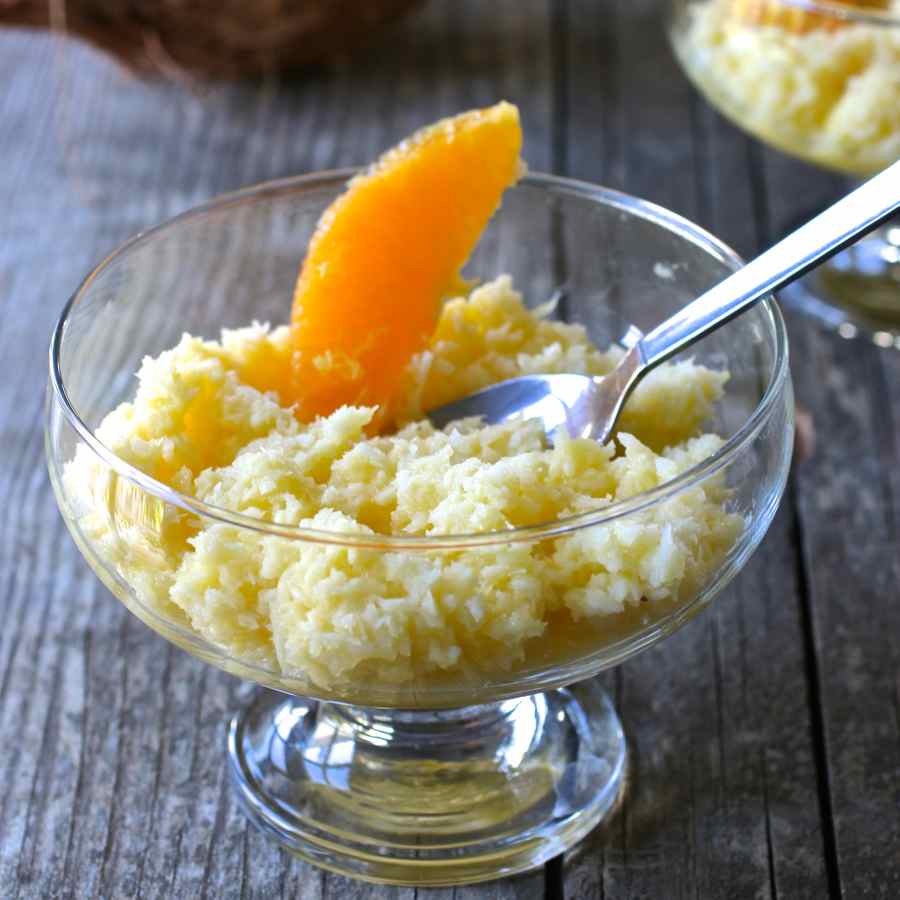
10. Cocada Amarela
Cocada Amarela is a cherished Angolan dessert made from grated coconut, sugar, and egg yolks, resulting in a rich, yellow-hued pudding. Often flavored with cinnamon, this sweet treat is traditionally served during special occasions and celebrations. The creamy texture and sweet coconut flavor make Cocada Amarela a delightful conclusion to any meal, reflecting the influence of Portuguese desserts on Angolan sweets and the local adaptation of these flavors to create a uniquely satisfying dessert experience.
Subscribe to our Newsletter
Stay updated with the latest trends in African Pop Culture!







